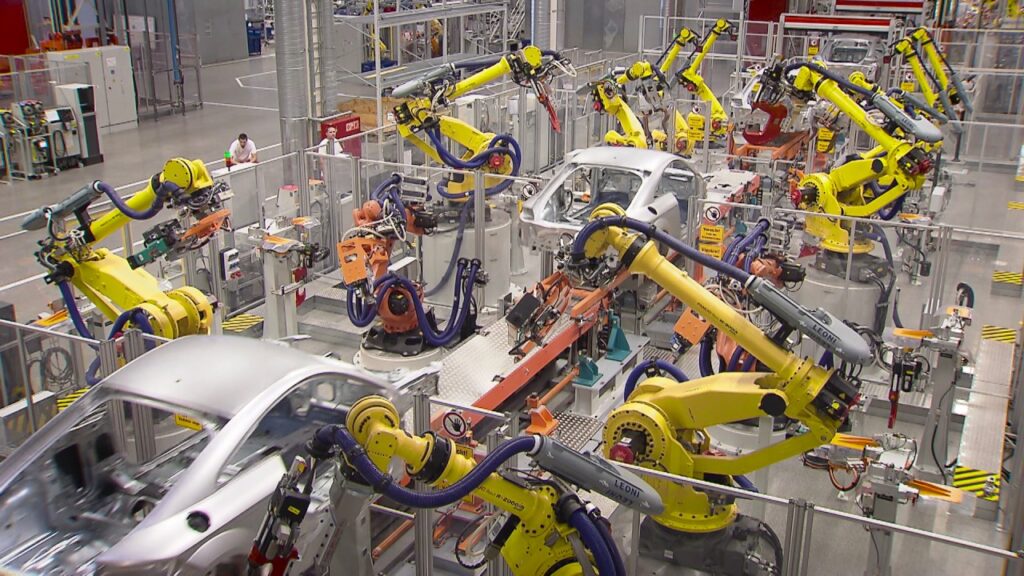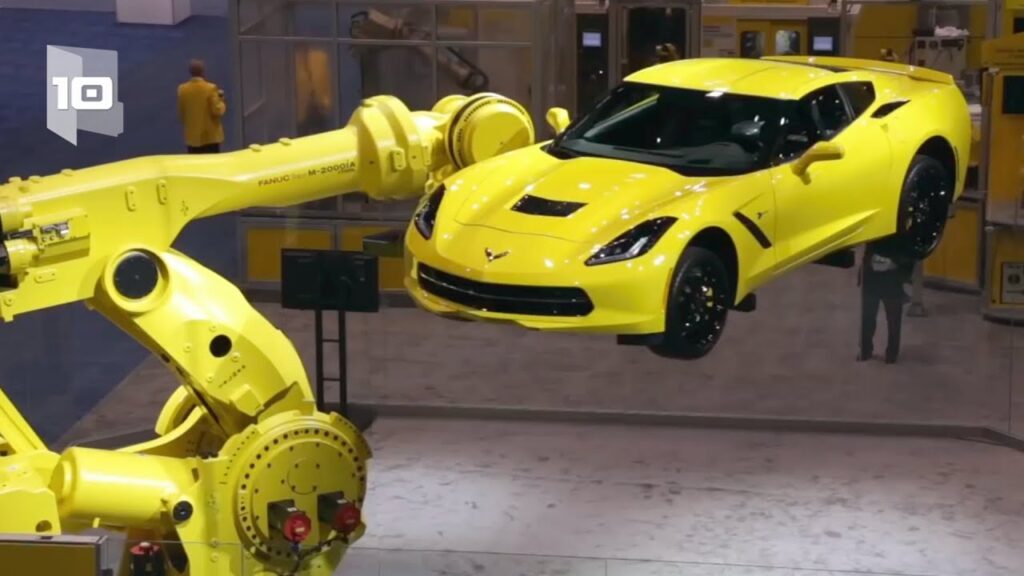Robots in Industrial Automation: Revolutionizing the Painting Process
Industrial automation has been transforming the manufacturing industry for decades, improving efficiency, reducing costs, and enhancing quality. Among the many advancements in automation technology, robots have emerged as game-changers in various sectors. In particular, the field of industrial painting has witnessed a remarkable transformation with the introduction of robots like the FANUC P-250iA/15.
The FANUC P-250iA/15 is an intelligent painting robot specifically designed for industrial automation. With its incredible precision and efficiency, this robot has revolutionized the painting process in industries worldwide. One remarkable example can be seen through a recent YouTube video showcasing two P-250iA/15 robots painting camouflage patterns on a vehicle (Industrial Automation Robots). Let’s explore how these robots are transforming the painting process in the manufacturing industry.
Industrial painting has always been a labor-intensive and time-consuming task. Traditionally, skilled human painters were required to meticulously paint various surfaces, often facing challenges such as fatigue, inconsistency, and even health hazards due to exposure to paint fumes. However, with the introduction of industrial automation robots like the P-250iA/15, these challenges are being gradually eliminated.
The P-250iA/15 is equipped with advanced sensors and technology that ensures precise and consistent paint application. From intricate patterns to large surfaces, this robot can handle a wide range of painting tasks with utmost accuracy. The robots are programmed to follow pre-defined patterns, guaranteeing uniformity and eliminating the human error that may occur during manual painting.
The efficiency of the P-250iA/15 is another aspect that sets it apart from its human counterparts. These robots work tirelessly, maintaining a consistent speed and accuracy throughout the painting process. Unlike human painters who may require breaks and rest periods, the P-250iA/15 can operate continuously, significantly reducing production time and increasing overall productivity. This not only saves costs but also allows manufacturers to meet tighter deadlines and increase their output.
One of the most impressive features of the P-250iA/15 is its ability to adapt to different surfaces and complex geometries. The robot’s advanced vision system enables it to precisely navigate around the object being painted, ensuring complete coverage without any missed areas. This level of adaptability and precision is vital in industries where multiple products with different shapes and sizes need to be painted.
Safety is a crucial aspect of any industrial process, and the P-250iA/15 excels in this domain as well. Industrial automation robots are designed to minimize the risk of accidents and injuries in the workplace. With safety features such as collision detection, emergency stop buttons, and protective barriers, these robots ensure a controlled and safe working environment. This not only protects the operators but also reduces the liability and potential costs associated with workplace accidents.
The integration of industrial automation robots like the P-250iA/15 also brings long-term financial benefits to manufacturers. Although the initial investment may seem significant, the overall cost savings over time are significant. With increased productivity, reduced labor costs, and improved quality control, manufacturers experience higher profitability and a quicker return on investment. Additionally, the longevity and durability of these robots ensure a reliable and consistent performance for years to come.
The success story of the P-250iA/15 and other painting robots in industrial automation is just the beginning of a technological revolution. As the manufacturing industry continues to embrace automation, we can expect further advancements in robotics and artificial intelligence. The possibilities are endless in terms of increasing efficiency, accuracy, and safety across various industrial processes.
In conclusion, the FANUC P-250iA/15 is a remarkable example of how industrial automation robots are revolutionizing the painting process. With its precision, efficiency, and adaptability, this intelligent painting robot has eliminated many challenges faced by human painters. From reducing production time to ensuring consistent quality, the P-250iA/15 offers numerous benefits to manufacturers. As automation technology continues to evolve, we can anticipate even more transformative advancements in industrial robotics, further streamlining manufacturing processes and boosting overall productivity.
Industrial Robot
“Enhancing Efficiency with Intelligent Painting Robot – Experience the Power of Industrial Automation Robots.”


